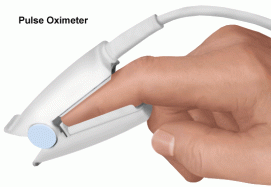Arthralgias, myalgias, and herx—oh my! (Symptom vocabulary for TBIDs) 05/22/2012
Posted by thetickthatbitme in TBI Facts, Tick-Lit, Treatment.Tags: antibiotics, arthralgia, Bell's palsy, Borrelia, herx, Herxheimer reaction, Lyme Disease, medicine, myalgia, pulse, supplements, tachycardia
trackback
This is part one in a multi-part series on vocabulary related to tick-borne infectious diseases (TBIDs). Today, we focus on symptoms. You can find all these terms and more on the Glossary page.
arthralgia: a fancy medical term for joint pain. The origin is Greek (arthro- = joint; -algos = pain). Arthralgias may be a symptom of injury, infection, illness, or an allergic reaction. They are a common symptom with TBIDs like Borrelia burgdorferi (Lyme Disease), Borrelia hermsii (TBRF), and Babesia.
myalgia: a fancy medical term for muscle aches. Myalgias can be a symptom of infection with Borrelia burgdorferi (Lyme Disease), Borrelia hermsii (TBRF), Babesia, Ehrlichia, Anaplasma phagocytophilum, Rocky Mountain Spotted Fever, Toxoplasmosis, Malaria, or Influenza. They can also be a symptom of inflammatory diseases like Multiple Sclerosis.
Bell’s palsy: This is a paralysis of the muscles in the face caused by damage to the seventh cranial nerve. It is often unilateral (only on one side), and it’s more commonly seen in patients with Borrelia burgdorferi. As you may know, one of the consequences of Borrelia infection is inflammation, and this inflammation can lead to loss of nerve function. You can read more about Bell’s palsy here. Patients with Borrelia infections may also have damage to the eighth cranial nerve (also known as the auditory vestibular nerve), which can result in tinnitus (ringing of the ears) and problems with balance.
postural tachycardia: Tachycardia is a heart rate that exceeds the normal range (usually indicated by a pulse greater than 100). Some people with infections have tachycardia all the time, but many only have postural tachycardia, which is tachycardia when you stand up for 3 minutes after lying down for 3 minutes. According to my doctor, this has been a great predictor of whether a patient has an infection, and he puts every new patient though the “tilt test”: lie down three minutes, have your vitals taken, stand up 3 minutes, have your vitals taken. Often, the difference in lying and standing pulse will decrease over the course of treatment.
herx: Herx is short for Herxheimer reaction (or Jarisch-Herxheimer reaction). It was named after dermatologists Adolf Jarisch and Karl Herxheimer in the late nineteenth century, who discovered it while treating Syphilis patients with mercury. (Fun fact: Herxheimer was a colleague of Paul Ehrlich, for whom Ehrlichia is named. They both helped found the University of Frankfurt. Not-so-fun fact: Herxheimer was murdered in 1942 by Nazis at Theresienstadt; he was 81.) A Herxheimer reaction can occur when one is being treated for an infection with antibiotics. It’s thought to be caused by the endotoxins that are released as bacteria start to die off. Herx are characterized by fever, chills, rigor (shaking), hypotension, headache, tachycardia, hyperventilation, vasodilation with flushing, myalgia (muscle pain), and exacerbation of skin lesions.
I’ve discovered a bit of an inconsistency when it comes to information available online and in published research about herx. Almost every Lyme patient blog I’ve ever read mentions herxing. I was herxing bad today, etc. Many patient and doctor organizations related to the treatment of Lyme Disease also discuss herxing. They characterize herxing as common among patients with Borrelia infections and as a sign that antibiotics are working. Herx seems to be used liberally as a term that means any sort of increased discomfort that a patient feels while undergoing antibiotic treatment.
For the sake of comparison, let me tell you how a medical textbook describes the Herxheimer reaction. I’m using as my reference Principles and Practices of Infectious Diseases, seventh edition (borrowed, not bought). I’ll start with the Herxheimer reaction as studied in patients with Borrelia hermsii (TBRF) infections. A herx in hermsii patients is characterized by severe rigors, increase in temperature, and decrease in blood pressure. The onset of reaction occurs within 2 hours of initial therapy and coincides with clearing of spirochetes from the blood. This means that in order to have the reaction you have to have spirochetes in the blood (which would be indicated by a positive blood smear). You’ll also notice that the reaction happens on the first day of treatment.
According to Principles and Practices, herx occur in 30-40% of patients with Borrelia hermsii infections. When a herx does occur, medical attention is necessary because there is a possibility of fatality. Aspirin is sometimes given to lower the fever. A saline infusion can be given to increase blood pressure. If the reaction is very severe, the patient may have to be given steroids. In sum, if you have an acute Borrelia hermsii infection and are treated with antibiotics, there is a chance that you will have a herx reaction the first day of treatment. If you are having a true herx, you will probably need immediate medical attention.
Now, you may remember that I had Borrelia hermsii, and upon reading the above information, I was really curious as to why I never experienced one of these reactions. When I asked my doctor about it, he explained that it was because I had a latent infection. In other words, I did not receive treatment until several years after I was infected. My body had already tried to fight off the bacteria, and had partially succeeded because my infection was no longer acute. This meant I did not have a high load of bacteria in my blood. So even though some days my joint and muscle pain worsened and I felt sick to my stomach, because I didn’t have the shaking, the fever, and the low blood pressure and because the bacteria was hiding in my joints, not in my blood, I never had a herx reaction. Dr. W went on to say that he has treated more than 50 people with B. hermsii infections, and he has never seen a herx in clinic. He has, however, seen some fever-chill reactions when patients with hermsii were being treated with Ceftriaxone. “And those weren’t herx?” I asked. He didn’t believe so; rather, he thought that the fever and chills were because Ceftriaxone wasn’t killing the bacteria quickly enough. When he switched those patients to Ertapenem, a stronger antibiotic, the fever and chills went away, and the patients saw improvement in their conditions.
Now here’s what Principles and Practices has to say about herx in patients with Borrelia burgdorferi (Lyme Disease). The reaction occurs during the first 24 hours of therapy, and consists of high fever, a redder rash, and greater pain. Some vasodilatation may also occur. The Herxheimer reaction occurred in approximately 15% of patients. Only 15 percent! That was shocking to read. There were also no reported deaths from Herxheimer reactions during antibiotic therapy for Lyme Disease.
Clearly, the rate of herx reactions in studies did not match my impression from anecdotal accounts from patients, so I asked Dr. W if he could offer any explanation. His hypothesis was that since most B. burgdorferi (Lyme) patients have latent (long-term) infections and not acute (new) infections, they are probably not having true herx reactions. However, since some doctors prescribe a lot of different supplements to be taken while patients are undergoing antibiotic therapy, perhaps some of the symptoms that patients feel are adverse reactions to the supplements. Because supplements are not subject to the same FDA regulation as pharmaceuticals, the companies that manufacture them are not required to prove their safety or effectiveness. Consequently, very little is known about how these products interact with prescription and over-the-counter medications. To read more about supplements and regulation, go here.
Here’s what I take away from all this:
- Herxheimer reaction is a medical term used to describe a specific set of symptoms in a specific set of patients (those with acute Borrelia infections) which may be life threatening (in the case of very high fever and very low blood pressure), particularly in patients with Borrelia hermsii infections.
- The term “herx” has been adopted by both the LLMD (Lyme-literate medical doctor) community and the Lyme patient community and has evolved into a generic, non-clinical term that means discomfort or worsening of symptoms that occurs multiple times throughout the course of antibiotic treatment.
- Just because a patient is experiencing discomfort does not mean he or she is having a true Herxheimer reaction.
- Contrary to what some doctors say, there is nothing worrisome about a patient who does not have a Herxheimer reaction, as they only occur in 30-40% of B. hermsii patients and 15% of B. burgdorferi patients.
- Some episodes of high fever and chills during antibiotic therapy might mean that the antibiotic is NOT working well enough. Patients sometimes benefit by being switched from Ceftriaxone to Ertapenem.
- Because some patients take a number of supplements in addition to antibiotic therapy and none of these are properly regulated by the FDA and studied in clinical trials, their effect on the body is unpredictable. It’s possible that some reactions that patients believe are Herxheimer reactions are actually reactions to other things they are taking.
Related articles
- My Story (thetickthatbitme.com)
- Ceftriaxone (Rocephin): Is your doctor following directions? (thetickthatbitme.com)
- Curious about Tick-borne Infections? (thetickthatbitme.com)


Comments»
No comments yet — be the first.